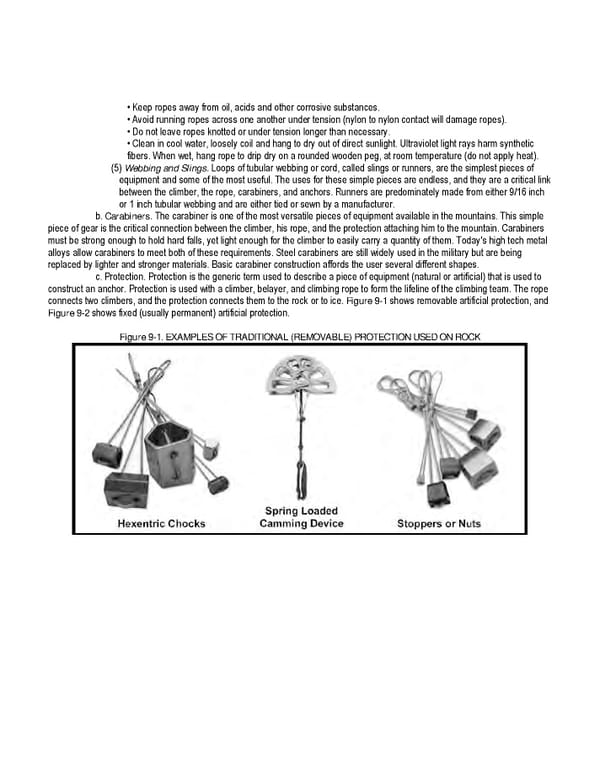• Keep ropes away from oil, acids and other corrosive substances. • Avoid running ropes across one another under tension (nylon to nylon contact will damage ropes). • Do not leave ropes knotted or under tension longer than necessary. • Clean in cool water, loosely coil and hang to dry out of direct sunlight. Ultraviolet light rays harm synthetic fibers. When wet, hang rope to drip dry on a rounded wooden peg, at room temperature (do not apply heat). (5) Webbing and Slings. Loops of tubular webbing or cord, called slings or runners, are the simplest pieces of equipment and some of the most useful. The uses for these simple pieces are endless, and they are a critical link between the climber, the rope, carabiners, and anchors. Runners are predominately made from either 9/16 inch or 1 inch tubular webbing and are either tied or sewn by a manufacturer. b. Carabiners. The carabiner is one of the most versatile pieces of equipment available in the mountains. This simple piece of gear is the critical connection between the climber, his rope, and the protection attaching him to the mountain. Carabiners must be strong enough to hold hard falls, yet light enough for the climber to easily carry a quantity of them. Today's high tech metal alloys allow carabiners to meet both of these requirements. Steel carabiners are still widely used in the military but are being replaced by lighter and stronger materials. Basic carabiner construction affords the user several different shapes. c. Protection. Protection is the generic term used to describe a piece of equipment (natural or artificial) that is used to construct an anchor. Protection is used with a climber, belayer, and climbing rope to form the lifeline of the climbing team. The rope connects two climbers, and the protection connects them to the rock or to ice. Figure 9-1 shows removable artificial protection, and Figure 9-2 shows fixed (usually permanent) artificial protection. Figure 9-1. EXAMPLES OF TRADITIONAL (REMOVABLE) PROTECTION USED ON ROCK
 Ranger Handbook Page 171 Page 173
Ranger Handbook Page 171 Page 173